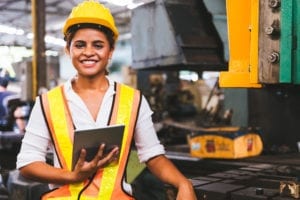How Connected Work Enables Real Human-Machine Collaboration
What's inside:
Industry 4.0 Realized: The Factory of the (Near) Future
Robots and digital systems speak exclusively in absolutes – binary, ones and zeros – and human workers don’t. For advanced technologies to be effective in the factory of the near future, both humans and machines must evolve a lingua franca so they can truly “talk” with one another. This is where connected work changes the game.
Humans are the Change Agents at the Heart of Productivity
For companies to keep manufacturing costs under control, humans and technology need to work together to deliver the maximum productivity from every shift, line and plant. Transparency, access and communication are at the heart of that productivity.
Connected Work Codifies the Process
Rigid, paper-based processes do not work. Workers need access to interactive workflows – and that can only be done digitally. With connected work, the entire process is codified, digitized and
communicated to those who conduct the work: your frontline workers.
Connected Work Helps Define Corrective Action
Connected work enables specific corrective-action mapping and enables you to create distinct responses to error conditions, allowing machines and humans to communicate. Connected Worker™ technology can “listen” for the condition, automatically trigger an alert, and deliver precise instructions to workers about what to do next.
Connected Work Systematizes Continuous Improvement
When you digitize workflows and make work performed by both humans and machines more consistent and transparent, you begin to collect critical operational data. By combining the data that machines produce with the data related to human action, you get a true picture of the work’s “digital twin.”





